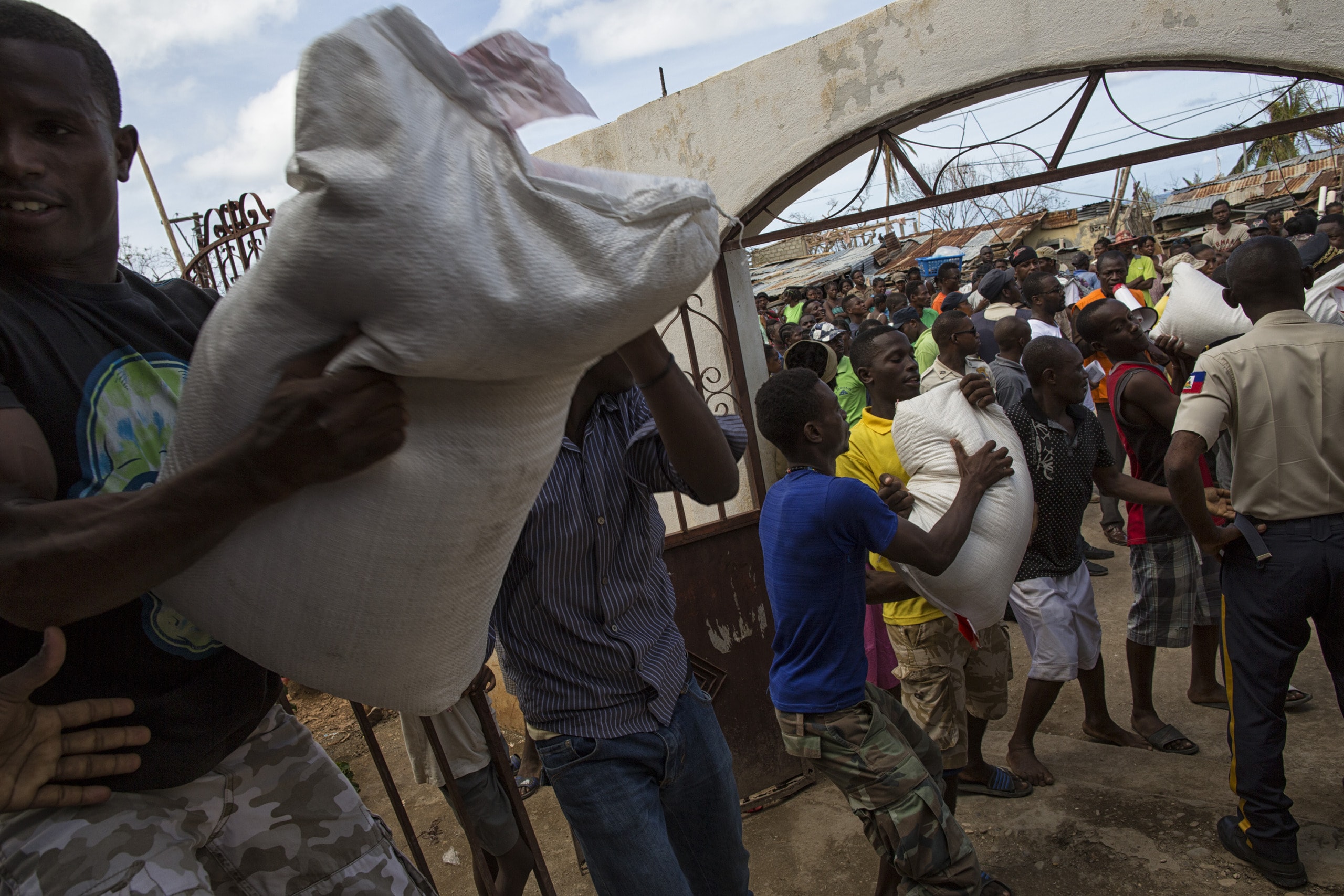World War II – the mother of all crises – convinced the world that a peacekeeping mechanism was urgently needed and that is how the United Nations was born. In the mind of its founding fathers, the main task was to avoid the repetition of wars but also of all types of crises, both man-made and natural disasters, that cause such catastrophic suffering and death of millions of innocent victims.
The United Nations formally came into existence in 1945 with 51 member states after its Charter had been ratified by China, France, the Soviet Union, the United Kingdom, and the United States. Under Chapter VII of the UN Charter, the UN Security Council (UNSC) has the primary power to “take enforcement measures to maintain or restore international peace and security.
Such measures range from economic sanctions to international military action, including peacekeeping operations, often with very specific guidance provided. Most importantly, UNSC decision resolutions can be vetoed by the five original signatories having veto power, i.e. the United States, the United Kingdom, France, Russia (formerly the Soviet Union) and China.
The General Assembly where all 193 UN member states are represented can also decide on matters of peace and security which requires only a two-thirds majority. Furthermore, the UN Secretary-General can also play a major, important, and complementary role.
Using diplomacy, the Secretary-General can rely on a range of Special and Personal Representatives, Envoys and Advisers in many areas of the world; and the matters that are addressed are wide-ranging, from DPPA-DPO (Department of Political and Peacebuilding Affairs-Department of Peace Operations), DESA (Department of Economic and Social Affairs) and OHCHR (Office of the United Nations High Commissioner for Human Rights) to CTO (Counter-Terrorism Office) and ODA (Office for Disarmament Affairs).
Peacekeeping operations: How they started, where they are now
In 1950 the Security Council called upon the North Korean authorities to withdraw their armed forces to the 38th parallel. It was possible because the USSR made the strategic error of absenting itself from the meeting.
This was and remains the single biggest instance of coordinated military action under UN auspices– one that is not likely to be repeated.
At present, there are 12 UN peacekeeping operations in three regions, employing roughly 90,000 peacekeepers and administrative personnel, drawn from some 125 countries.
Virtually each of these operations is custom designed and based on a UN Security Council resolution providing specific guidance. The troops come from multiple sources, and operations are reliant on funding from the member country contributions under the assessed budget of the UN for peacekeeping approved by the UN General Assembly.
Functions have ranged from preventing the onset, escalation, continuation, and recurrence of internal armed conflict; to facilitating political processes; to assisting in the disarmament, demobilization, and reintegration of former combatants.
Today the world knows of the horrific earthquake of February 6, 2023, having devastating effects in both Turkey and Syria, with millions of people, including displaced Syrians who oppose the Assad Government. Given the dimension of this human tragedy, this would seem an opportunity for United Nations engagement, holding at least temporarily the political issues to allow any and all humanitarian relief efforts.
The initial answer came quickly: “Syria’s ambassador to the United Nations, announced that the Syrian government would accept aid from any country and coordinate assistance to all areas of control, but it would not agree to greater cross-border access from Turkey into non-government-held areas.”
Apparently, that position changed, so according to the United Nations Office for the Coordination of Humanitarian Affairs, on Thursday a convoy carrying relief provisions crossed through the only humanitarian aid corridor between Turkey and Syria. Relief is most urgently needed in the earliest days after an earthquake. If there was an external entity ready to assist in assuring humanitarian assistance was being carefully monitored, this would have contributed to providing the rapid assistance needed.
Much has been tried…
Experts, scholars, researchers, and institutes have dedicated their life and work to understanding and putting forward approaches to address the myriad challenges embedded in this field, whether conventional warfare, internal conflict, mass migration, displacement, or instances of destabilizing natural disasters.
Those of us who are not specialists have neither extensive knowledge of the past nor the ability to suggest how current approaches might be improved.
That said, what may be of value and can be brought into the mix are unconventional, out-of-the-box thinking, if you will. This is a subject so critical to our collective future it has not received the attention it deserves, nor have all the institutional changes during the past two decades been taken into account.
What is missing?
For now, peacekeeping operations are entirely ad hoc as they only occur when the five permanent members of the UN Security Council can agree that such an operation can take place at all – a fairly rare event given the wide political divergences between western-style democracies (US, UK and France) and eastern autocracies (Russia, China).
What seems to be critically lacking is some form of permanent, ready-to-respond, and funded force or forces capable of addressing or mitigating limited conflicts or crisis situations – ones that are or could become threats to a country, its neighbors, regional stability and/or security.
Such missions would include instances where there has been large forced or quasi-forced migration or internal displacement. These events and numbers are exploding in terms of situations within a country and those involving others outside.
In searching for solutions there may be value in considering ways to bring other international institutions into the mix, those which had heretofore not seemed relevant, and could complement and work in concert with those that are at the forefront of peace and security.
Could the International Monetary Fund (IMF) be involved?
The IMF is much more today than in 1946 when it came into force and in several key ways.
With 190 member countries, it remains generally widely respected and relevant, albeit not universally nor in all quarters, nor without criticism.
Importantly it has significantly expanded country and regional risk assessment factors included under its Article IV of its Articles of Agreements. These consultations go well beyond direct currency and financial analysis. and now look at spillovers and “spillbacks” covering a broad range, including climate change and more recently, pandemic preparedness, specifically:
“34. The sources and channels of spillovers have increased and expanded, sometimes beyond traditional areas of Fund expertise, including climate change…. Article IV consultations should cover inward spillovers, outward spillovers, and spillbacks where appropriate….”
(Spillbacks arise when one country’s outward spillovers affect other countries and trigger adverse feedback effects on the source country.)
“41. Trends such as demographics, technological change and digitalization, inequality, socio-political and geopolitical developments, and climate change can have a first-order macrocritical impact on economic sustainability…increasingly shaping the economic landscape, and the COVID crisis has exacerbated pre-existing trends, such as rising inequality.”
A major new tool: The new IMF Resilience and Sustainability Trust (RST)
The IMF’s new financial tool, its Resilience and Sustainability Trust (RST) was created to help low-income and vulnerable middle-income countries build resilience to external shocks and ensure sustainable growth.
Now operational it is expected to secure $42 billion.
Its current focus areas are for now, on climate change and pandemic preparedness. It is not such a stretch to integrate border conflicts, large migration, or internal displacement as critical factors affecting economic resilience and stability.
Consider peacekeeping discussions under Article IV and accessing the RST with the United Nations
Coupling IMF expanded coverage of Article IV risk consultations with its RST mission and resources, could be a basis for initiating discussions between the IMF Executive Director and her team, and the United Nations Secretary-General and his team. Discussions should address how peacekeeping efforts could be complementary to both institutional mandates and capabilities.
Opening such an inter-organizational dialogue would be simply a first step, with many more needed before any prospects of being translated into fact and action.
Hypothetically, as part of its Article IV assessments UN peacekeeping experts could assist IMF teams in evaluating countries and regions under threat of such situations, and identify how and where they might benefit from external outside engagement.
Again hypothetically, assured financing could be from a dedicated RST sub-funding window supporting permanent response peacekeepers, and acting with the approval of the concerned parties.
If there were interest on both sides, the way forward would be an in-principle agreement on what peacekeeping actions to be covered would be defined, and each action discussed in an appropriate venue –but not subject to United Nations Security Council veto.
During any such initial inter-organizational consultations, pathways could be explored to achieve this common objective. Clearly, this is a major hurdle, even problematic, but certainly well beyond the scope of this article.
What is without a doubt needed is more permanent and better peacekeeping arrangements. While key aspects of future arrangements are not addressed here, such as command and control of troops, we no longer can allow engagement decisions to be single country captive, and with more assured and sustainable financing.
Getting there must be a priority for all of us, and with new resolve. So if there are organizations that just “might” contribute, they need to be approached. And the IMF is a good candidate: We could expect that if a first UN peacekeeping operation strengthened by IMF financial backing achieves success, this would go a long way to convince the world to adopt this approach.
Editor’s Note: The opinions expressed here by the authors are their own, not those of Impakter.com — In the Featured Photo: Screenshot taken at the moment IMF Director Kristalina Georgieva in December 13, 2022 meeting (see video) stated: “Here is our reality: Unless we change the trajectory of carbon emissions in emerging markets and developing countries now, by 2030 they would contribute 66% of the emissions, 20% more than they did some decades ago. So for all of us, it is critical that we help emerging markets and developing countries to transform to a low-carbon and climate-resilient trajectory, or otherwise, we are all cooked!”














